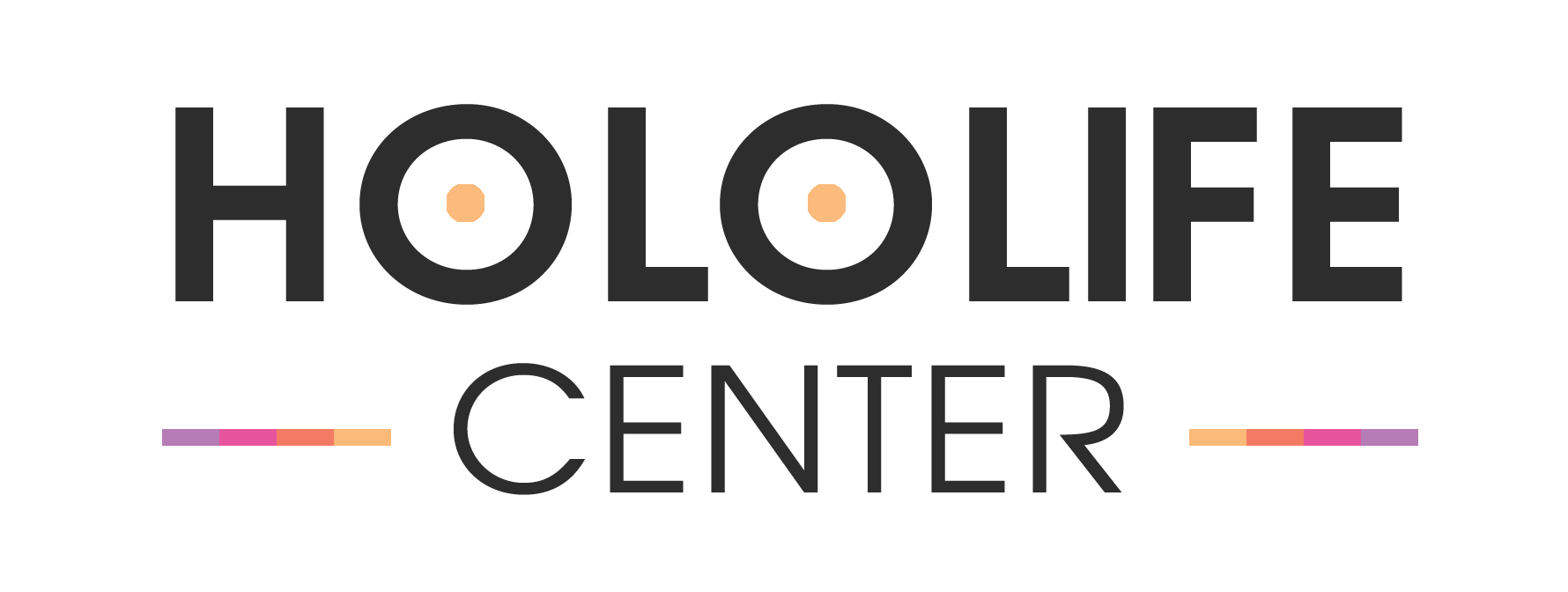
A range of emerging therapies offers potential benefits for general wellness and targeted rehabilitation. Hyperbaric Oxygen Therapy (HBOT), Whole-Body Cryotherapy (WBC), and Whole-Body Red Light Therapy (also known as Photobiomodulation) have each garnered interest for their roles in supporting recovery, managing inflammation, and enhancing overall well-being. This article examines how these therapies work on a cellular and systemic level, explores scientific findings on possible applications, and discusses typical safety considerations.
Hyperbaric Oxygen Therapy (HBOT)
HBOT involves breathing oxygen in a pressurized chamber at 1.3 to 2.4 times normal atmospheric pressure. Although the concept originated as a treatment for decompression sickness related to diving, it has expanded substantially into wound care, sports recovery and potential neurocognitive enhancement.
Mechanisms of Action
When an individual is inside a hyperbaric chamber, increased atmospheric pressure enables more oxygen to dissolve directly into blood plasma, lymphatic fluid and other bodily fluids. This process substantially elevates tissue oxygenation, potentially fueling cellular energy production. Intermittent exposure to a high-oxygen environment can also trigger the hyperoxic-hypoxic paradox—while in the chamber, tissues become enriched with oxygen, but upon returning to normal pressure, the body’s response includes signaling processes that resemble those triggered by low-oxygen states. This can promote the release of growth factors, stimulate blood vessel formation, and facilitate tissue repair. See detailed physiological effects below.(1-5)

Image: Oxygen delivery chain.
Source: Hadanny, A. & Efrati, S. (2020). The hyperoxic-hypoxic paradox. Biomolecules 10 (6): 958.
Physiological Effects:
- Oxygen solubility and energy production: HBOT increases oxygen solubility in blood plasma, lymph, and cerebrospinal fluid in a pressurised environment (up to 10-15x), which enhances cellular respiration and ATP production, supporting cellular repair processes and the immune system.
- Fluctuations in free oxygen levels: Instead of absolute oxygen levels, fluctuations in oxygen levels at the cellular level can be interpreted as a sign of oxygen deprivation. Repeated intermittent hyperoxia (such as repeated use of HBOT) can stimulate many neurotransmitters and cellular mechanisms that are usually induced during hypoxia.
- Hyperoxic-hypoxic paradox (HHP): Repeated hyperoxia activates cellular responses that mimic the effects of hypoxia. This stimulates an increase in HIF (hypoxia-inducible factor) and VEGF levels, as well as stem cell proliferation and mobilization to promote tissue regeneration.
- Regulation of gene expression: HBOT activates genes involved in antioxidant function, which reduces inflammation and promotes tissue repair.
- Oxidative stress and free radicals: HBOT reduces oxidative stress by neutralising free radicals, which helps reduce chronic inflammation and the degenerative diseases it causes.
- Reducing inflammation and muscle damage: HBOT can reduce exercise-induced inflammation and muscle damage.

Scientific Findings and Applications
- Soft Tissue Injury and Postoperative Healing: Studies have observed improvements in injury repair, including muscle strains, tendon lesions, and postsurgical rehabilitation. The extra oxygen supply supports fibroblast activity, collagen synthesis, and a faster overall recovery timeline.(6)
- Chronic Wounds and Infections: HBOT can be helpful in challenging wound scenarios, such as diabetic foot ulcers, mainly due to improved circulation and the potential for enhanced immune cell function.(7)
- Neurocognitive Support: Research suggests that specific neural conditions, including mild traumatic brain injuries, may respond favorably, potentially due to the promotion of new blood vessels and reduced inflammation in neural tissues.(8)
- Cell Mobilization and Telomeres: Ongoing research indicates that repetitive sessions may mobilize stem cells from the bone marrow. Some findings suggest benefits for telomere length and cellular aging markers, although more in-depth, controlled studies are needed.(9-10)
- Anti-inflammatory effects: Elevated oxygen levels delivered under pressure can attenuate pro-inflammatory cytokines, thereby lessening systemic inflammation. Some individuals with chronic inflammatory conditions report notable relief after repeated sessions, suggesting that hyperbaric oxygen therapy (HBOT) may play a role in conditions characterized by persistent inflammation.(11)
- Mitochondrial support: By ensuring tissues receive an abundance of oxygen, HBOT can enhance mitochondrial function and mitochondrial biogenesis. This optimized energy environment often translates to improved tissue repair and a more robust response to cellular stress.(12)

Image: Hypoxia causes the inhibition of SIRT1 through changes in the NADH/NAD+ ratio, which can lead to the inhibition of mitochondrial biogenesis. In contrast, intermittent HBOT activates SIRT1, leading to the activation of mitochondrial biogenesis.
Source: Schottlender, N., Gottfried, I., & Ashery, U. (2021). Hyperbaric oxygen treatment: effects on mitochondrial function and oxidative stress. Biomolecules, 11(12), 1827.
Treatment Parameters and Session Structure
HBOT commonly spans 5 to 60 sessions, each lasting 60 to 90 minutes. However, even one session of HBOT has beneficial physiological effects. Protocols vary based on therapeutic goals—athletic recovery or mild rejuvenation generally involves fewer, lower-pressure treatments; severe wounds or neurological rehabilitation may require more frequent or higher-pressure sessions. During treatment, individuals usually breathe enriched air or pure oxygen through a mask and are in a pressurized, oxygen-rich, enclosed chamber.
Safety Considerations and Contraindications
While HBOT is viewed as relatively safe under medical oversight, it is contraindicated for conditions such as untreated pneumothorax (collapsed lung). It may be less suitable for individuals with unstable lung disease (severe COPD) or certain ear and sinus issues. Pressure changes can cause discomfort in the ears and sinuses, so careful preparation, such as using equalizing techniques, is often necessary. Consulting a trained practitioner ensures that protocols are tailored to personal health status and that potential risks—like barotrauma or oxygen toxicity—are managed appropriately.(13)
Whole-Body Cryotherapy (WBC)
Whole-body cryotherapy uses extreme cold to trigger a physiological response that can aid in muscle recovery, manage inflammation, and potentially stabilize mood. Typically, individuals enter a cryotherapy chamber for two or three minutes, where dry cold air, often between -110°C and -140°C, is circulated.(14)
Upon entering the chamber, skin thermoreceptors respond to the sudden drop in temperature, prompting peripheral blood vessels to constrict. This vasoconstriction shepherds blood from the extremities toward the core. Once the session ends, vessels dilate again, and oxygen-rich blood is redistributed to tissues that may have experienced micro-tears or inflammation. Substances such as norepinephrine may be released, contributing to pain relief and a feeling of invigoration after the session.
Potential Health & Performance Benefits
- Musculoskeletal and Athletic Recovery: Many athletes employ WBC after intense workouts to reduce delayed onset muscle soreness (DOMS). Studies note a diminished perception of pain and quicker readiness for subsequent training sessions.(15)
- Inflammation and Joint Pain: WBC may help people with conditions like osteoarthritis or adhesive capsulitis by lowering systemic inflammatory markers. Some evidence suggests a corresponding reduction in the reliance on pain medication.(16)
- Atopic Dermatitis and Skin Conditions: Early observations indicate that cryotherapy can reduce itching and improve sleep quality in some with eczema or other dermatitis diagnoses.(17)
- Mood and Cognitive Effects: Preliminary reports link cryotherapy sessions to a transient mood elevation, possibly due to endorphin release, along with mild improvements in mental clarity in specific populations.(18)

Safe Usage & Possible Limitations
Although short exposure to freezing temperatures is generally well-tolerated, certain conditions necessitate caution:(19)
- Cardiovascular Risks: Individuals with unstable hypertensive conditions or advanced cardiac disease must consult a physician.
- Cold Sensitivity: Severe Raynaud’s phenomenon or cold-induced conditions, such as cryoglobulinemia, may worsen.
- Open Wounds: Direct contact with extreme cold could hamper wound healing or cause irritation.
Whole-body Red Light Therapy (Photobiomodulation)
Whole-body red light therapy, often described as Photobiomodulation, utilizes wavelengths predominantly between 600 nm (red) and 950 nm (near-infrared) to interact with light-sensitive units in cells. Many devices, such as LED panels or laser arrays, are used in clinical or wellness settings to bathe sizable body areas in specific wavelengths.
Basic Cellular Mechanisms
Mitochondria are believed to be key targets. Light in the red and near-infrared spectrum can be absorbed by cytochrome c oxidase, an essential enzyme in the respiratory chain, potentially promoting increased ATP (adenosine triphosphate) production. This can bolster cellular energy and, in turn, support tissue repair, reduce inflammation, and enhance local circulation.(20)

Health Effects of Whole-Body PBM
Studies focusing on musculoskeletal injuries, like tendinopathies or chronic neck pain, have noted short- to medium-term improvements in pain and function. However, results can vary depending on dose and tissue depth. Some athletes incorporate red light therapy before or after training to reduce soreness, accelerate muscle recovery and support long-term performance.(21-22)
Red light exposure can encourage collagen production, leading to potential cosmetic improvements in skin elasticity, wrinkle appearance, and overall texture. Additionally, it may fast-track wound healing and reduce scarring by promoting healthy tissue regeneration.(23-24)
Emerging investigations have begun to explore whether directed wavelengths of near-infrared light improve cognitive function and emotional well-being, potentially affecting conditions with neuroinflammatory components. Near infrared light therapy promotes the formation of new nerve cells and synapses, which is useful in the treatment of stroke and neurodegenerative diseases.(25-26)

Image: Mechanisms of cutaneous phototransduction leading to analgesia.
Source: Cheng, K., Martin, L. F., Slepian, M. J., Patwardhan, A. M., & Ibrahim, M. M. (2021). Mechanisms and pathways of pain photobiomodulation: a narrative review. The journal of pain, 22(7), 763-777.
Protocols & Safety Profile
Therapists and clinics often recommend short repeated sessions—several times a week at moderate intensities—for four to eight weeks. Light therapy follows a biphasic dose response, meaning that while moderate exposure has been associated with enhanced function, excessive light energy can sometimes negate or even reverse these positive effects.(27)
When appropriately administered, red light therapy is considered low-risk. Some individuals may notice mild, transient skin irritation or dryness. Depending on the device’s intensity and beam direction, eye protection or closed eyes may be recommended.
Integrating the Therapies into One Session ("The Holy Trinity of Recovery")
Although HBOT, WBC and Photobiomodulation each function via distinct pathways—oxygen saturation, temperature modulation, and light-induced cellular stimulation, respectively—they share an overarching goal: to support cellular resilience, regulate inflammation and improve recovery processes. When combined thoughtfully, they may offer enhanced outcomes for individuals seeking comprehensive support.
Back-to-Back-to-Back in a Single Session:
HBOT First: Oxygenating tissues before other interventions could prime cells to respond efficiently to subsequent stimuli.
WBC Second: Cryotherapy immediately after HBOT may tighten blood vessels and further regulate inflammation, potentially locking in some benefits of heightened oxygenation.
Whole-Body Red Light Therapy Third: Finishing with red or near-infrared light may help reinforce cellular repair and regeneration, promoting efficient nutrient utilization and recovery by capitalizing on any post-cryo surge in peripheral circulation.
Spacing Out Over Days or Weeks:
Some healthcare practitioners and wellness enthusiasts prefer to separate these therapies to avoid overstimulation, focusing instead on a cyclical approach.
For instance, an athlete might undergo cryotherapy right after an intense workout, use red light therapy the following day for cellular repair, and then schedule an HBOT session later in the week for comprehensive recovery and tissue oxygenation.

Potential Synergies
A six-month multimodal wellness protocol (The Healthspan Project, 2024) combining cryotherapy, infrared sauna, photobiomodulation and lifestyle guidance significantly improved participants' health markers, including reduced inflammation, lower LDL cholesterol, decreased body fat, and enhanced heart rate variability in those with cardiovascular risk factors.(28)
- Inflammation Management: Each modality inhibits inflammatory pathways through different mechanisms, suggesting a potentially cumulative benefit when combined.
- Tissue Recovery: Enhanced oxygenation, improved circulation, and cellular ATP production could collectively expedite muscle and joint repair.
- Stress and Sleep Quality: Evidence suggests that both cryotherapy and red light therapy may positively impact parasympathetic function. In contrast, hyperbaric oxygen therapy (HBOT) can help reduce stress caused by hypoxia in the body. This multifaceted support might lead to better sleep patterns and mental clarity.
PRACTICAL TIPS
- Professional Guidance: Consult a healthcare provider or specialist experienced in administering these interventions. Tailoring sessions to individual goals, health status, and tolerance is critical.
- Begin Conservatively: If you're attempting a back-to-back session, start with shorter durations and fewer weekly sessions to see how your body responds.
- Monitor Hydration and Nutrition: Proper hydration and balanced nutrition can help optimize the benefits of each therapy, as cellular repair and metabolic processes rely heavily on available nutrients.
Conclusion
Hyperbaric Oxygen Therapy, Whole-Body Cryotherapy, and Whole-Body Red Light Therapy represent three distinct yet complementary approaches to elevating wellness and recuperating more effectively from various physical stressors. Each therapy’s effect on inflammatory pathways, tissue repair, and cellular metabolism underscores its broad appeal across athletic, rehabilitative, and general health contexts. While the science behind these interventions continues to evolve, they highlight a growing trend: leveraging targeted physiological stimuli, such as high-pressure oxygen, extreme cold, or specialized red light spectrum photobiomodulation to help the body heal, adapt and thrive.
For those considering any of these approaches, seeking guidance from qualified health professionals who can help determine the most appropriate, evidence-based protocols is essential. Safety, individual medical history, and clearly defined goals remain the cornerstones of practical and beneficial treatments.
DISCLAIMER:
This article is for informational purposes and is not a substitute for professional medical advice. Individuals interested in HBOT, Whole-Body Cryotherapy or Red Light Therapy should consult trained healthcare practitioners to ensure the chosen methods are safe and suitable for their unique health needs.
Scientific References:
- Cannellotto, M. & Yasells García, A. & Landa, M. (2024). Hyperoxia: Effective mechanism of hyperbaric treatment at mild-pressure. International Journal of Molecular Sciences 25 (2): 777.
- Hadanny, A. & Efrati, S. (2020). The hyperoxic-hypoxic paradox. Biomolecules 10 (6): 958.
- Godman, C. & Joshi, R. & Giardina, C. & Perdrizet, G. & Hightower, L. (2010). Hyperbaric oxygen treatment induces antioxidant gene expression. Annals of the New York Academy of Sciences 1197 (1): 178–183.
- Lindenmann, J. & Kamolz, L. & Graier, W. & Smolle, J. & Smolle-Juettner, F. (2022). Hyperbaric oxygen therapy and tissue regeneration: A literature survey. Biomedicines 10 (12): 3145.
- Woo, J. & Min, J. H. & Lee, Y. & Roh, H. (2020). Effects of hyperbaric oxygen therapy on inflammation, oxidative/antioxidant balance, and muscle damage after acute exercise in normobaric, normoxic and hypobaric, hypoxic environments: A pilot study. International Journal of Environmental Research and Public Health 17 (20): 7377.
- Moghadam, N., Hieda, M., Ramey, L., Levine, B. D., & Guilliod, R. (2020). Hyperbaric Oxygen Therapy in Sports Musculoskeletal Injuries. Medicine and science in sports and exercise, 52(6), 1420-1426.
- Jiang, F., Zhang, Y., Cheng, S., Yang, X., Bai, M., & Zhang, M. (2024). Quality of evidence supporting the role of hyperbaric oxygen therapy for diabetic foot ulcers. International wound journal, 21(4), e14530.
- Mensah-Kane, P., & Sumien, N. (2023). The potential of hyperbaric oxygen as a therapy for neurodegenerative diseases. Geroscience, 45(2), 747-756.
- Hachmo, Y., Hadanny, A., Hamed, R. A., Daniel-Kotovsky, M., Catalogna, M., Fishlev, G., ... & Efrati, S. (2020). Hyperbaric oxygen therapy increases telomere length and decreases immunosenescence in isolated blood cells: a prospective trial. Aging (Albany NY), 12(22), 22445.
- MacLaughlin, K. J., Barton, G. P., Braun, R. K., MacLaughlin, J. E., Lamers, J. J., Marcou, M. D., & Eldridge, M. W. (2023). Hyperbaric air mobilizes stem cells in humans; a new perspective on the hormetic dose curve. Frontiers in Neurology, 14, 1192793.
- Capó, X. et al. (2023). Hyperbaric oxygen therapy reduces oxidative stress and inflammation, and increases growth factors favouring the healing process of diabetic wounds. International journal of molecular sciences, 24(8), 7040.
- Schottlender, N., Gottfried, I., & Ashery, U. (2021). Hyperbaric oxygen treatment: effects on mitochondrial function and oxidative stress. Biomolecules, 11(12), 1827.
- Gawdi, R., & Cooper, J. S. (2023). Hyperbaric contraindications. In StatPearls [Internet]. StatPearls Publishing.
- Banfi, G., Lombardi, G., Colombini, A., & Melegati, G. (2010). Whole-body cryotherapy in athletes. Sports medicine, 40, 509-517.
- Chen, R., Ma, X., Ma, X., & Cui, C. (2024). The effects of hydrotherapy and cryotherapy on recovery from acute post-exercise induced muscle damage—a network meta-analysis. BMC Musculoskeletal Disorders, 25(1), 749.
- Garcia, C., Karri, J., Zacharias, N. A., & Abd-Elsayed, A. (2021). Use of cryotherapy for managing chronic pain: an evidence-based narrative. Pain and therapy, 10, 81-100.
- Kepinska-Szyszkowska, M., Misiorek, A., Kapinska-Mrowiecka, M., Tabak, J., & Malina, K. (2020). Assessment of the influence systemic cryotherapy exerts on chosen skin scores of patients with atopic dermatitis: pilot study. BioMed Research International, 2020(1), 5279642.
- Rymaszewska, J., Lion, K. M., Stańczykiewicz, B., Rymaszewska, J. E., Trypka, E., Pawlik-Sobecka, L., ... & Szcześniak, D. (2021). The improvement of cognitive deficits after whole-body cryotherapy–A randomised controlled trial. Experimental Gerontology, 146, 111237.
- Legrand, F. D., Dugué, B., Costello, J., Bleakley, C., Miller, E., Broatch, J. R., ... & Capodaglio, P. (2023). Evaluating safety risks of whole-body cryotherapy/cryostimulation (WBC): a scoping review from an international consortium. European journal of medical research, 28(1), 387.
- Berni, M., Brancato, A. M., Torriani, C., Bina, V., Annunziata, S., Cornella, E., ... & Pasta, G. (2023). The role of low-level laser therapy in bone healing: systematic review. International Journal of Molecular Sciences, 24(8), 7094.
- De Oliveira, M. F., Johnson, D. S., Demchak, T., Tomazoni, S. S., & Leal-Junior, E. C. (2021). Low-intensity LASER and LED (photobiomodulation therapy) for pain control of the most common musculoskeletal conditions. European journal of physical and rehabilitation medicine, 58(2), 282.
- González-Muñoz, A., Perez-Montilla, J. J., Cuevas-Cervera, M., Aguilar-García, M., Aguilar-Nuñez, D., Hamed-Hamed, D., ... & Navarro-Ledesma, S. (2023). Effects of Photobiomodulation in sports performance: a literature review. Applied Sciences, 13(5), 3147.
- Hernández-Bule, M. L., Naharro-Rodríguez, J., Bacci, S., & Fernández-Guarino, M. (2024). Unlocking the power of light on the skin: a Comprehensive Review on Photobiomodulation. International journal of molecular sciences, 25(8), 4483.
- Couturaud, V., Le Fur, M., Pelletier, M., & Granotier, F. (2023). Reverse skin aging signs by red light photobiomodulation. Skin Research and Technology, 29(7), e13391.
- Nairuz, T., & Lee, J. H. (2024). Photobiomodulation Therapy on Brain: Pioneering an Innovative Approach to Revolutionize Cognitive Dynamics. Cells, 13(11), 966.
- Yang, M., Yang, Z., Wang, P., & Sun, Z. (2021). Current application and future directions of photobiomodulation in central nervous diseases. Neural Regeneration Research, 16(6), 1177-1185.
- Hamblin, M. R., & Huang, Y. (Eds.). (2013). Handbook of photomedicine. CRC press.
- Chun, E., Crete, A., Neal, C., Joseph, R., & Pojednic, R. (2024, March). The healthspan project: a retrospective pilot of biomarkers and biometric outcomes after a 6-month multi-modal wellness intervention. In Healthcare (Vol. 12, No. 6, p. 676). MDPI.



